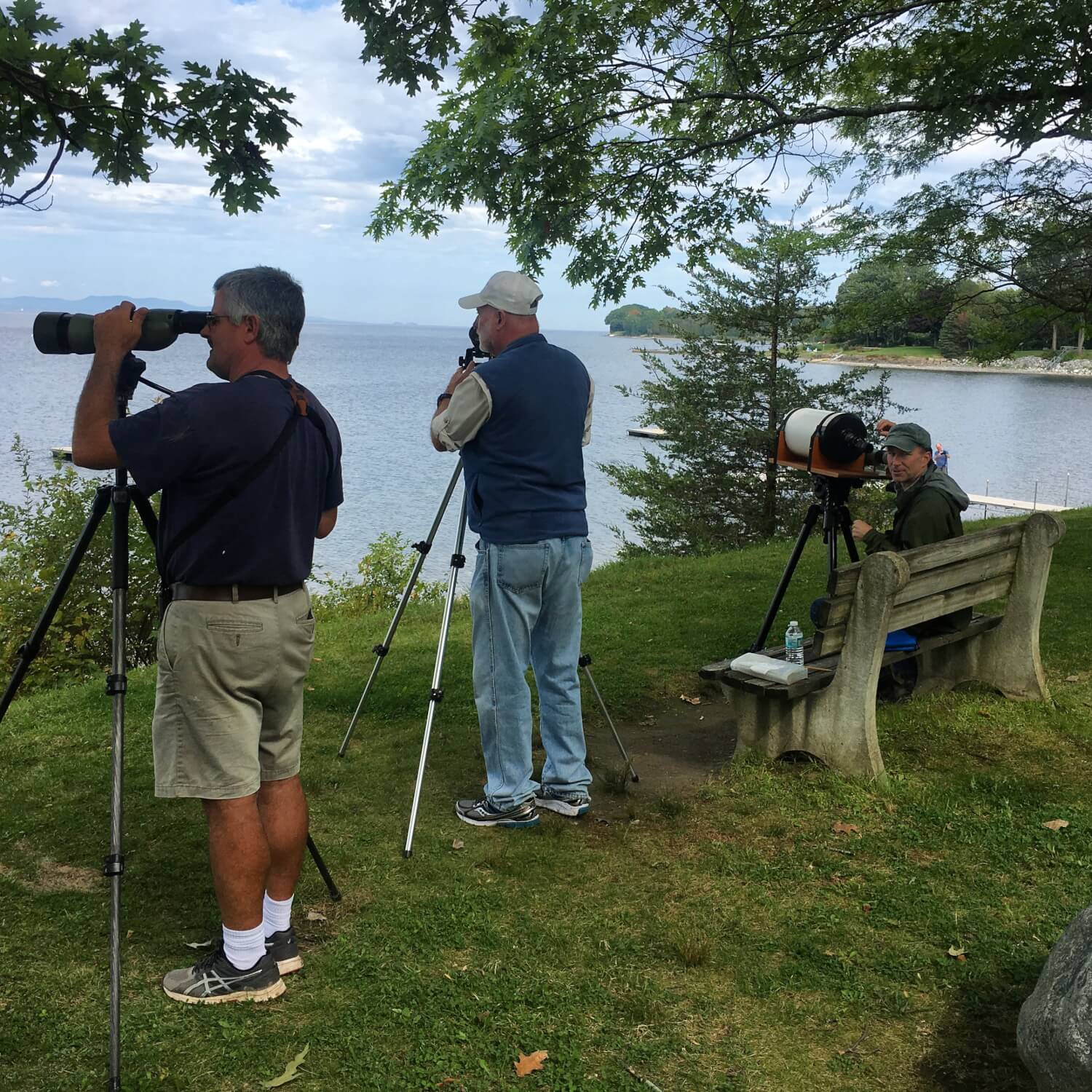Early migration tracked at Charlotte Beach

Massive flocks of yellow-rumped warblers graced Charlotte Beach decades ago but you won’t see them now, birder Dwight Cargill of Essex Junction said. “There’s been a decline in species over time due to global warming,” he said. “Others we rarely see now are the olive-sided flycatcher, the whip-poor-will and the common night hawk.”
It’s a combination of the changing environment, climate, insect loss and loss of habitat, Cargill said. He’s been birding in the area for more than 40 years. “What we do have is an influx of cardinals, red-bellied woodpeckers and tufted titmouse because it’s warmer here now.”
Cargill was birding at Charlotte Beach with fellow hobbyist Jim Mead of Williston on Sept. 14. They peered through high-powered spotting scopes over at the New York shoreline where they spotted a rare jaeger.
“They attack gulls so they will spit out their food, and when they do, the jaeger goes down and eats it,” Mead said. “We are looking for early migration here today, particularly jaegers.”
At that moment he witnessed a probing sanderling feeding on the shore, running along the edge of the water. “They are funny to watch,” he said.
White-winged scoters and black-bellied plovers were also spotted. “Charlotte Beach has a wide expanse of water,” Cargill said. “There is no other place you can go on the lake and have this much viewing.”
In a place like Charlotte Beach there is a lot more time to discern what is seen through the lens, Mead said. “The jaegers in particular will actually chase gulls, and they will stop on a dime and go another way so you get to look at them for a long time and from different perspectives.”
Veteran and backyard birders alike report what they see to ebird.org, an online checklist program. It was launched in 2002 by the Cornell Lab of Ornithology and National Audubon Society to innovate and easily consolidate the way the birding community reports and accesses information about birds. It’s amassing one of the largest and fastest growing biodiversity data resources in the world, Mead said.
It was a bit early for a stationary lake watch at Charlotte Beach, but Cargill and Mead said they were taking the day to familiarize themselves with the landscape, to scope out any new landmarks and prepare for the height of migration this fall.
“Some might not call it a sport, but you can get seriously injured walking through the woods,” Mead joked about birding. “It’s sort of a sport. Like hunting without the mess.”

